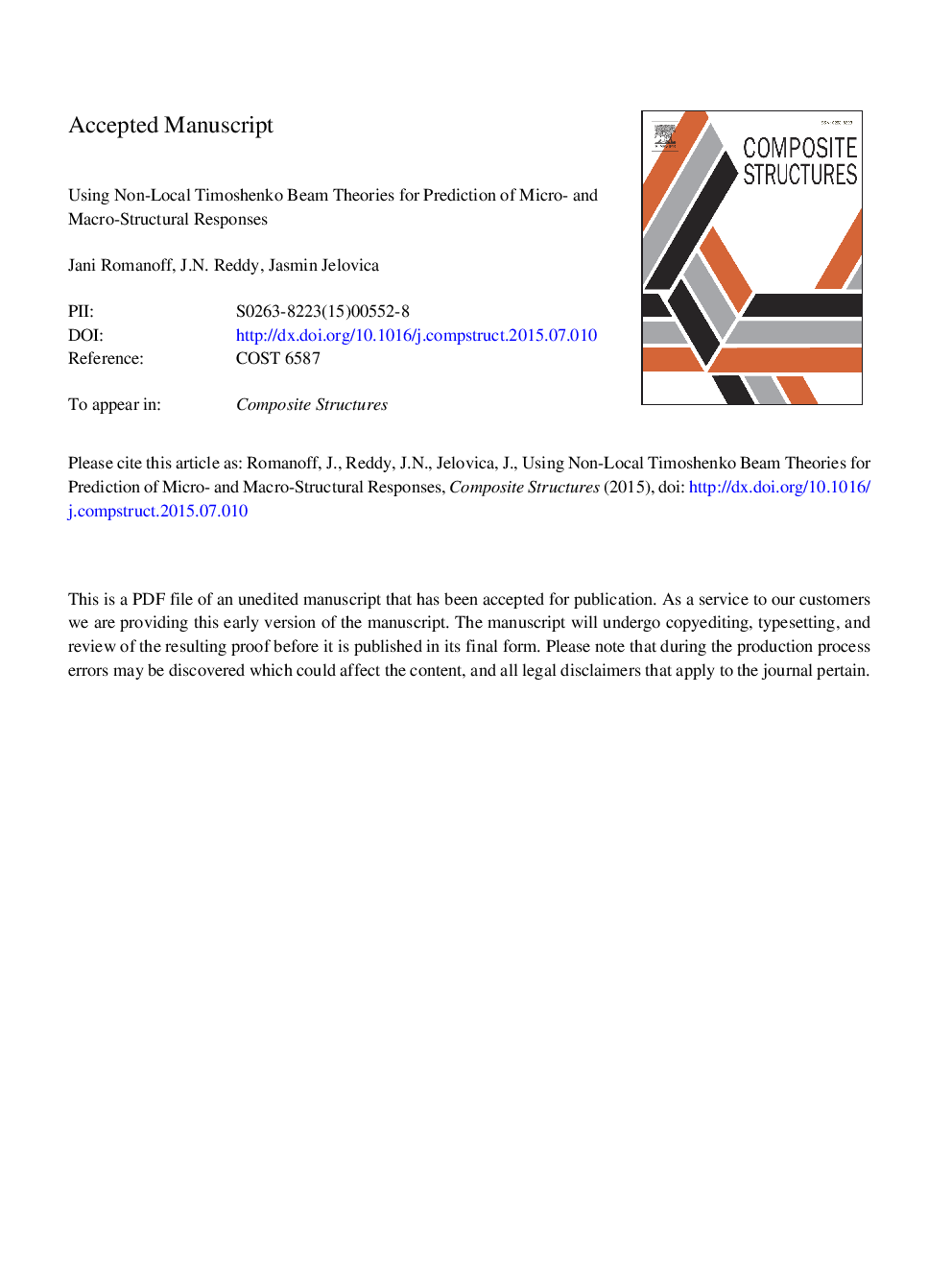| کد مقاله | کد نشریه | سال انتشار | مقاله انگلیسی | نسخه تمام متن |
|---|---|---|---|---|
| 4912446 | 1428551 | 2016 | 24 صفحه PDF | دانلود رایگان |
عنوان انگلیسی مقاله ISI
Using non-local Timoshenko beam theories for prediction of micro- and macro-structural responses
ترجمه فارسی عنوان
با استفاده از نظریه های پرتوهای تیموشنکو غیر محلی برای پیش بینی پاسخ های میکرو و کلان ساختاری
دانلود مقاله + سفارش ترجمه
دانلود مقاله ISI انگلیسی
رایگان برای ایرانیان
کلمات کلیدی
ترجمه چکیده
در این مقاله، تحولات نظریه های پوسته ساندویچ غیر محلی را می توان در ارزیابی واکنش های میکرو و کل ساختار مورد استفاده قرار داد. مقاله استفاده از همگن سازی-محلی سازی، استرس زوج اصلاح شده و نظریه های پرتو ضخیم است. همگن سازی، معادلات دیفرانسیل غالب را از جابجایی ها از طریق فشار و فشار و بارگذاری خارجی حاصل می کند. این باعث می شود که فرآیند محلی سازی دقیق که اثرات میکروساختار را از راه حل همگن ساز بازیابی کند و آنها را به پاسخ جهانی تبدیل کند. بعضی از مطالعات موردی با استفاده از آزمایش های محاسباتی پشتیبانی می شوند: کوتاه ترین پرتوها تنها چهار سلول واحد در طول طول دارند. راه حل حاضر در مواردی از سختی برشی بی نهایت و صفر به راه حل جسمی صحیح تبدیل می شود. محدودیت سختی برشی صفر مهم است، زیرا نظریه سنتی تیموشنکو سنتی قادر به پیش بینی واکنش درست نیست. برخی از تفاوت ها در راه حل ها در پرتوهای بسیار کوتاه در سختی چرخشی بین چهره ها و هسته مشاهده می شود، جایی که طول موج های پاسخ های جهانی و محلی به شدت در تعامل برقرار می شود. تئوری کنونی می تواند به ریز ساختارهای مختلف و صفحات گسترش یابد. مزیت رویکرد کنونی این است که آنالیز است که امکان شناسایی پارامترهای فیزیکی را فراهم می کند.
موضوعات مرتبط
مهندسی و علوم پایه
سایر رشته های مهندسی
مهندسی عمران و سازه
چکیده انگلیسی
This paper presents the developments of the non-local sandwich beam theories that can be used to assess the micro- and macro-structural responses. The paper utilizes homogenization-localization, modified couple stress, and thick-faces beam theories. The homogenization derives prevailing differential equations from displacements through strains and stresses to external loading. This enables accurate localization process that recovers the microstructural effects from the homogenized solution and couples them to the global response. Some case studies are supported by computational experiments: the shortest beams have only four unit cell along their length. The present solution converges to the physically correct solution in the cases of infinite and zero shear stiffness. The limit of zero shear stiffness is important because there the traditional Timoshenko beam theory fails to predict the response correctly. Some difference in the solutions is observed on very short beams at intermediate rotation stiffness between the faces and the core, where the wavelengths of the global and local responses heavily interact. Present theory can be extended to different microstructures and to plates. The benefit of the present approach is that it is analytical which enables identification of the physical parameters.
ناشر
Database: Elsevier - ScienceDirect (ساینس دایرکت)
Journal: Composite Structures - Volume 156, 15 November 2016, Pages 410-420
Journal: Composite Structures - Volume 156, 15 November 2016, Pages 410-420
نویسندگان
Jani Romanoff, J.N. Reddy, Jasmin Jelovica,
